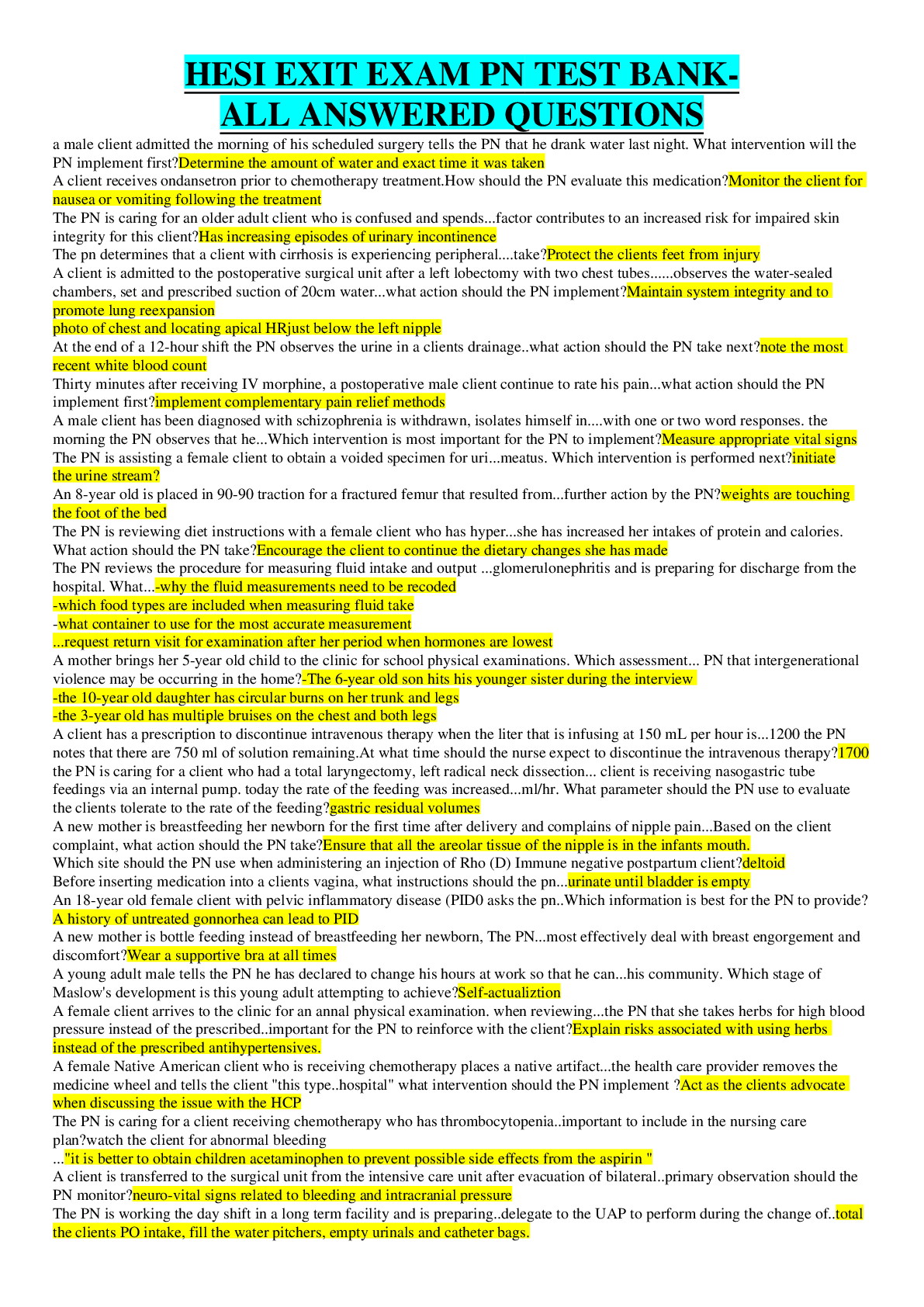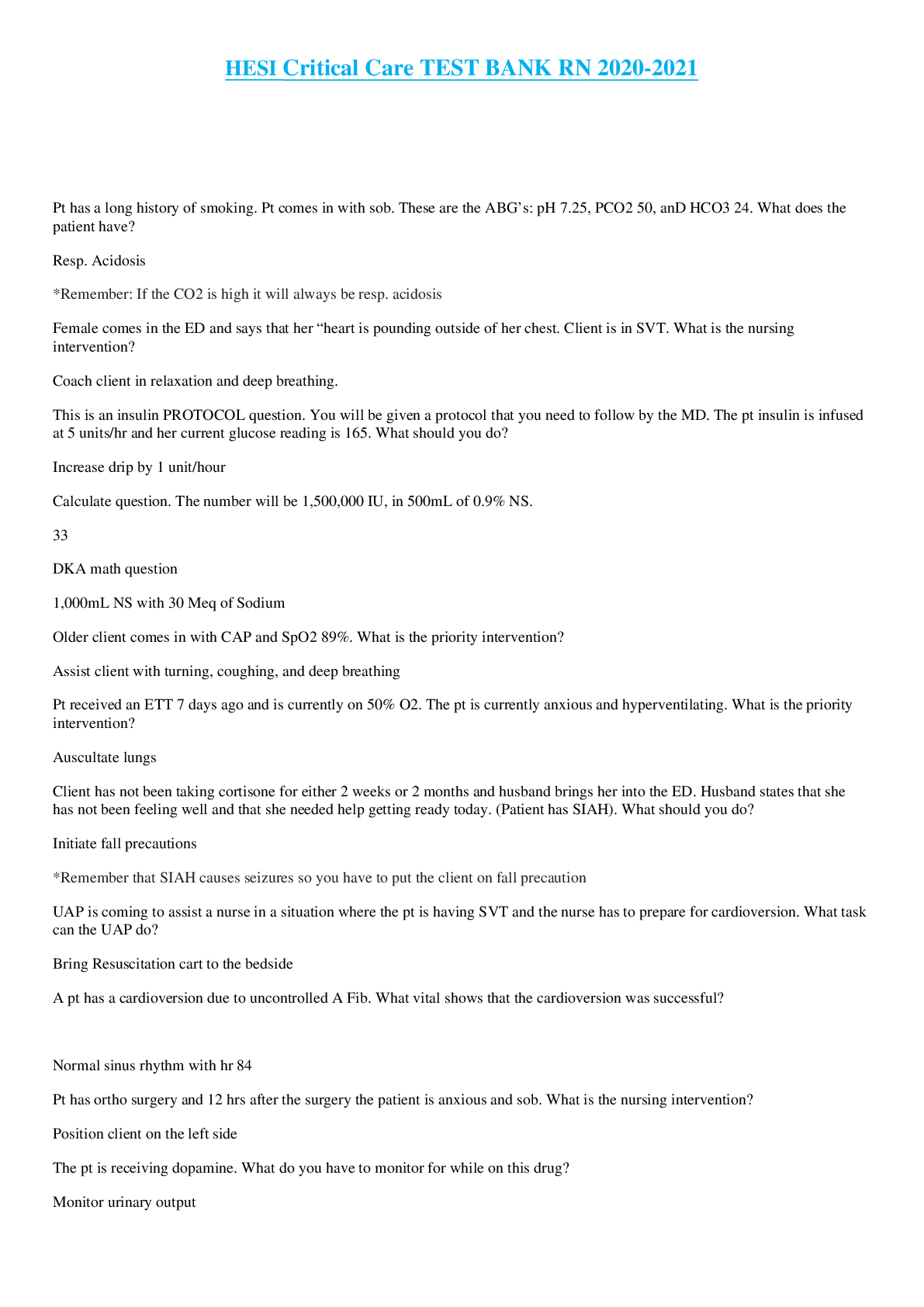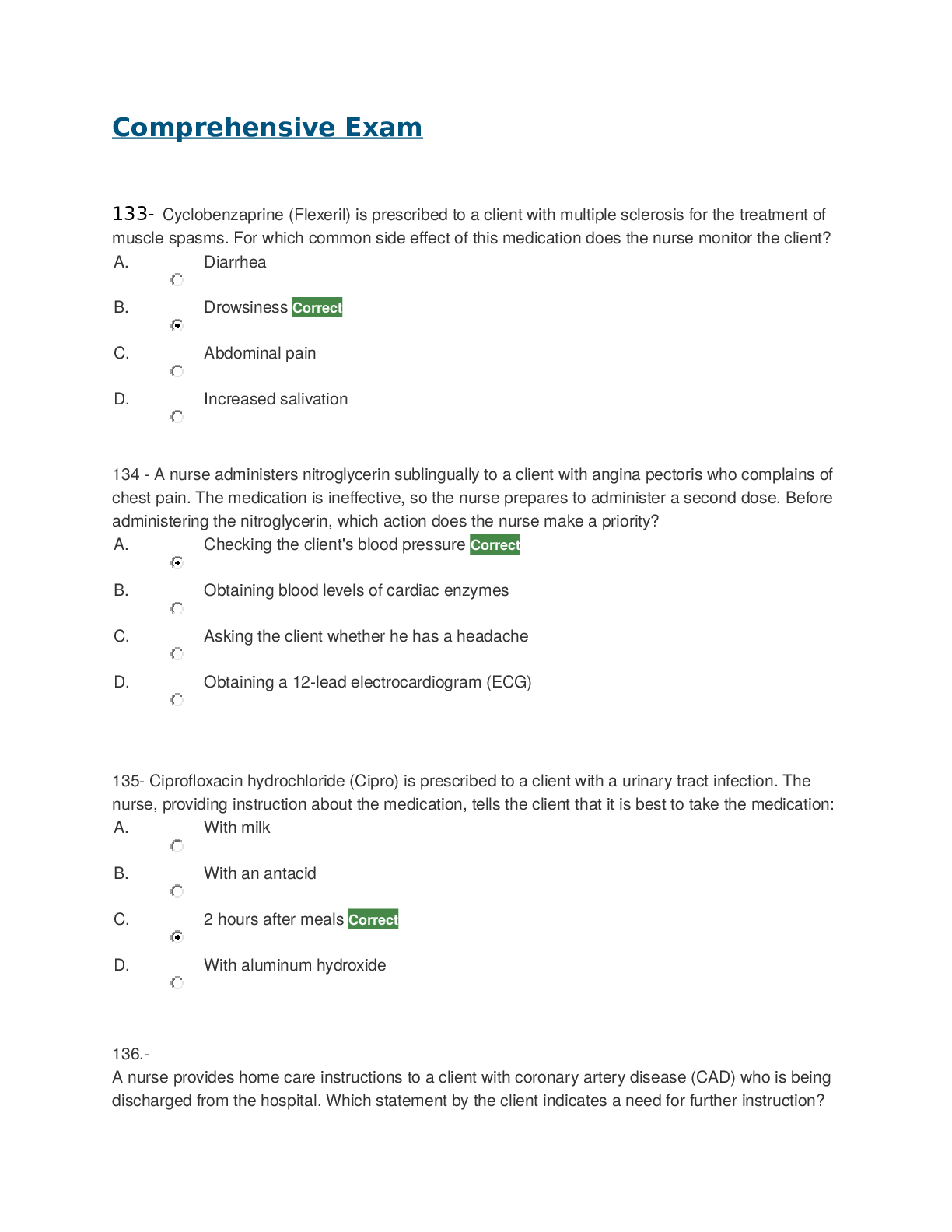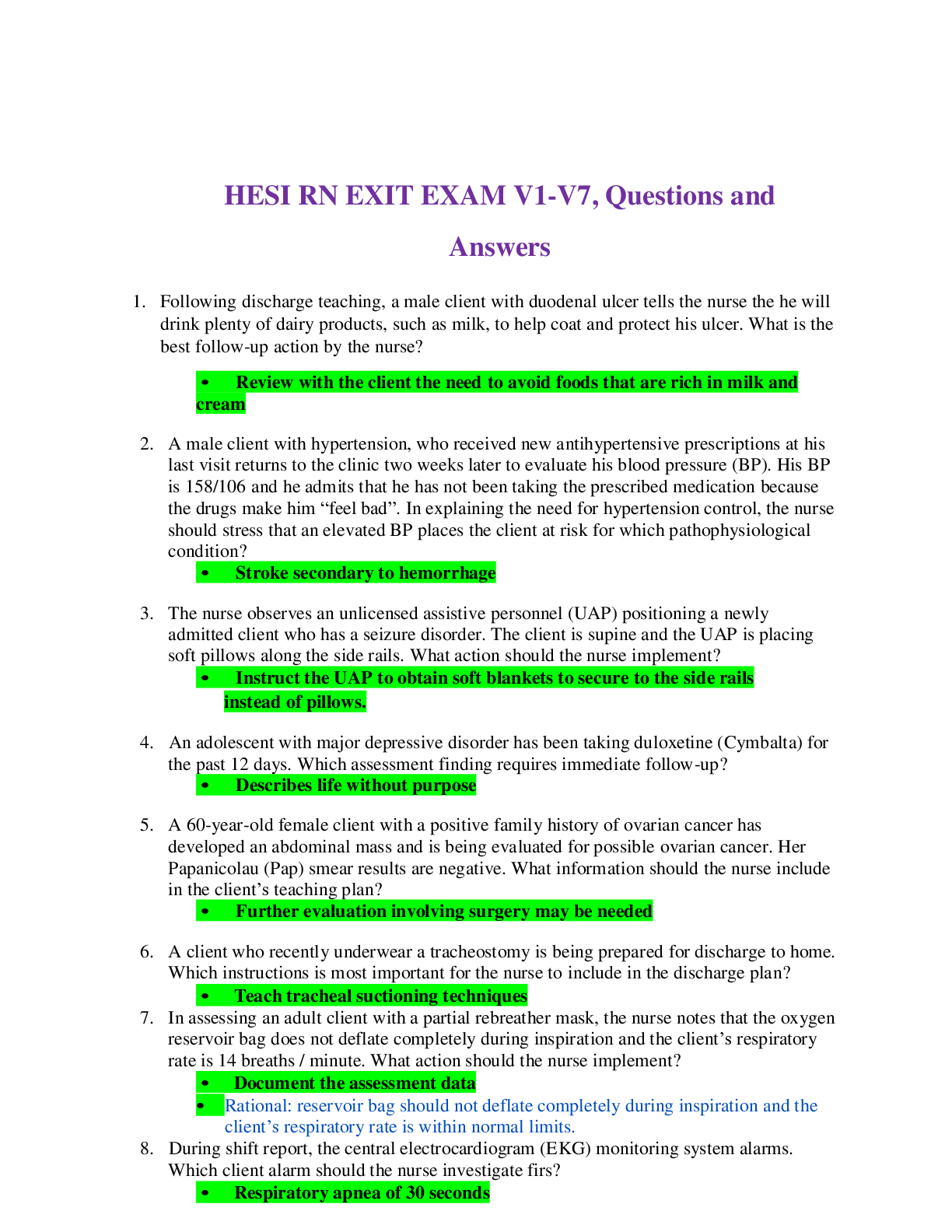Health Care > HESI > HESI RN PHARMACOLOGY EXAM PACK - BEST MERGED ACTUAL EXAMS - BEST PREDICTOR FOR 2022 EXAM (All)
HESI RN PHARMACOLOGY EXAM PACK - BEST MERGED ACTUAL EXAMS - BEST PREDICTOR FOR 2022 EXAM
Document Content and Description Below
HESI RN PHARMACOLOGY EXAM PACK - BEST MERGED ACTUAL EXAMS - BEST PREDICTOR FOR 2022 EXAM 1) A nurse is caring for a client with hyperparathyroidism and notes that the client'sserum calcium level is ... 13 mg/dL. Which medication should the nurse prepare to administer as prescribed to the client? 1. Calcium chloride 2. Calcium gluconate 3. Calcitonin (Miacalcin) 4. Large doses of vitamin D 3. Calcitonin (Miacalcin) Rationale: The normal serum calcium level is 8.6 to 10.0 mg/dL. This client is experiencing hypercalcemia. Calcium gluconate and calcium chloride are medications used for the treatment of tetany, which occurs as a result of acute hypocalcemia. In hypercalcemia, large doses of vitamin D need to be avoided. Calcitonin, a thyroid hormone, decreases the plasma calcium level by inhibiting bone resorption and lowering the serum calcium concentration. 2.) Oral iron supplements are prescribed for a 6-year-old child with iron deficiency anemia. The nurse instructs the mother to administer the iron with which best food item? 1. Milk 2. Water 3. Apple juice 4. Orange juice 4. Orange juice Rationale: Vitamin C increases the absorption of iron by the body. The mother should be instructed to administer the medication with a citrus fruit or a juice that is high in vitamin C. Milk may affect absorption of the iron. Water will not assist in absorption. Orange juice contains a greater amount of vitamin C than apple juice. 3.) Salicylic acid is prescribed for a client with a diagnosis of psoriasis. The nurse monitors the client, knowing that which of the following would indicate the presence of systemic toxicity from this medication? 1. Tinnitus 2. Diarrhea 3. Constipation 4. Decreased respirations 1. Tinnitus Rationale: Salicylic acid is absorbed readily through the skin, and systemic toxicity (salicylism) can result. Symptoms include tinnitus, dizziness, hyperpnea, and psychological disturbances. Constipation and diarrhea are not associated with salicylism. 4.) The camp nurse asks the children preparing to swim in the lake if they have applied sunscreen. The nurse reminds the children that chemical sunscreens are most effective when applied: 1. Immediately before swimming 2. 15 minutes before exposure to the sun 3. Immediately before exposure to the sun 4. At least 30 minutes before exposure to the sun 4. At least 30 minutes before exposure to the sun Rationale: Sunscreens are most effective when applied at least 30 minutes before exposure to the sun so that they can penetrate the skin. All sunscreens should be reapplied after swimming or sweating. 5.) Mafenide acetate (Sulfamylon) is prescribed for the client with a burn injury. When applying the medication, the client complains of local discomfort and burning. Which of the following is the most appropriate nursing action? 1. Notifying the registered nurse 2. Discontinuing the medication 3. Informing the client that this is normal 4. Applying a thinner film than prescribed to the burn site 3. Informing the client that this is normal Rationale: Mafenide acetate is bacteriostatic for gram-negative and gram-positive organisms and is used to treat burnsto reduce bacteria present in avascular tissues. The client should be informed that the medication will cause local discomfort and burning and that this is a normal reaction; therefore options 1, 2, and 4 are incorrect 6.) The burn client is receiving treatments of topical mafenide acetate (Sulfamylon) to the site of injury. The nurse monitors the client, knowing that which of the following indicates that a systemic effect has occurred? 1.Hyperventilation 2.Elevated blood pressure 3.Local pain at the burn site 4.Local rash at the burn site 1.Hyperventilation Rationale: Mafenide acetate is a carbonic anhydrase inhibitor and can suppress renal excretion of acid, thereby causing acidosis. Clients receiving this treatment should be monitored for signs of an acid-base imbalance (hyperventilation). If this occurs, the medication should be discontinued for 1 to 2 days. Options 3 and 4 describe local rather than systemic effects. An elevated blood pressure may be expected from the pain that occurs with a burn injury. 7.) Isotretinoin is prescribed for a client with severe acne. Before the administration of this medication, the nurse anticipates that which laboratory test will be prescribed? 1. Platelet count 2. Triglyceride level 3. Complete blood count 4. White blood cell count 2. Triglyceride level Rationale: Isotretinoin can elevate triglyceride levels. Blood triglyceride levels should be measured before treatment and periodically thereafter until the effect on the triglycerides has been evaluated. Options 1, 3, and 4 do not need to be monitored specifically during this treatment. 8.) A client with severe acne is seen in the clinic and the health care provider (HCP) prescribes isotretinoin. The nurse reviews the client's medication record and would contact the (HCP) if the client is taking which medication? 1. Vitamin A 2. Digoxin (Lanoxin) 3. Furosemide (Lasix) 4. Phenytoin (Dilantin) 1. Vitamin A Rationale: Isotretinoin is a metabolite of vitamin A and can produce generalized intensification of isotretinoin toxicity. Because of the potential for increased toxicity, vitamin A supplementsshould be discontinued before isotretinoin therapy. Options 2, 3, and 4 are not contraindicated with the use of isotretinoin. 9.) The nurse is applying a topical corticosteroid to a client with eczema. The nurse would monitor for the potential for increased systemic absorption of the medication if the medication were being applied to which of the following body areas? 1. Back 2. Axilla 3. Soles of the feet 4. Palms of the hands 2. Axilla Rationale: Topical corticosteroids can be absorbed into the systemic circulation. Absorption is higher from regions where the skin is especially permeable (scalp, axilla, face, eyelids, neck, perineum, genitalia), and lower from regions in which permeability is poor (back, palms, soles). 10.) The clinic nurse is performing an admission assessment on a client. The nurse notes that the client is taking azelaic acid (Azelex). Because of the medication prescription, the nurse would suspect that the client is being treated for: 1. Acne 2. Eczema 3. Hair loss 4. Herpes simplex [Show More]
Last updated: 1 year ago
Preview 1 out of 185 pages
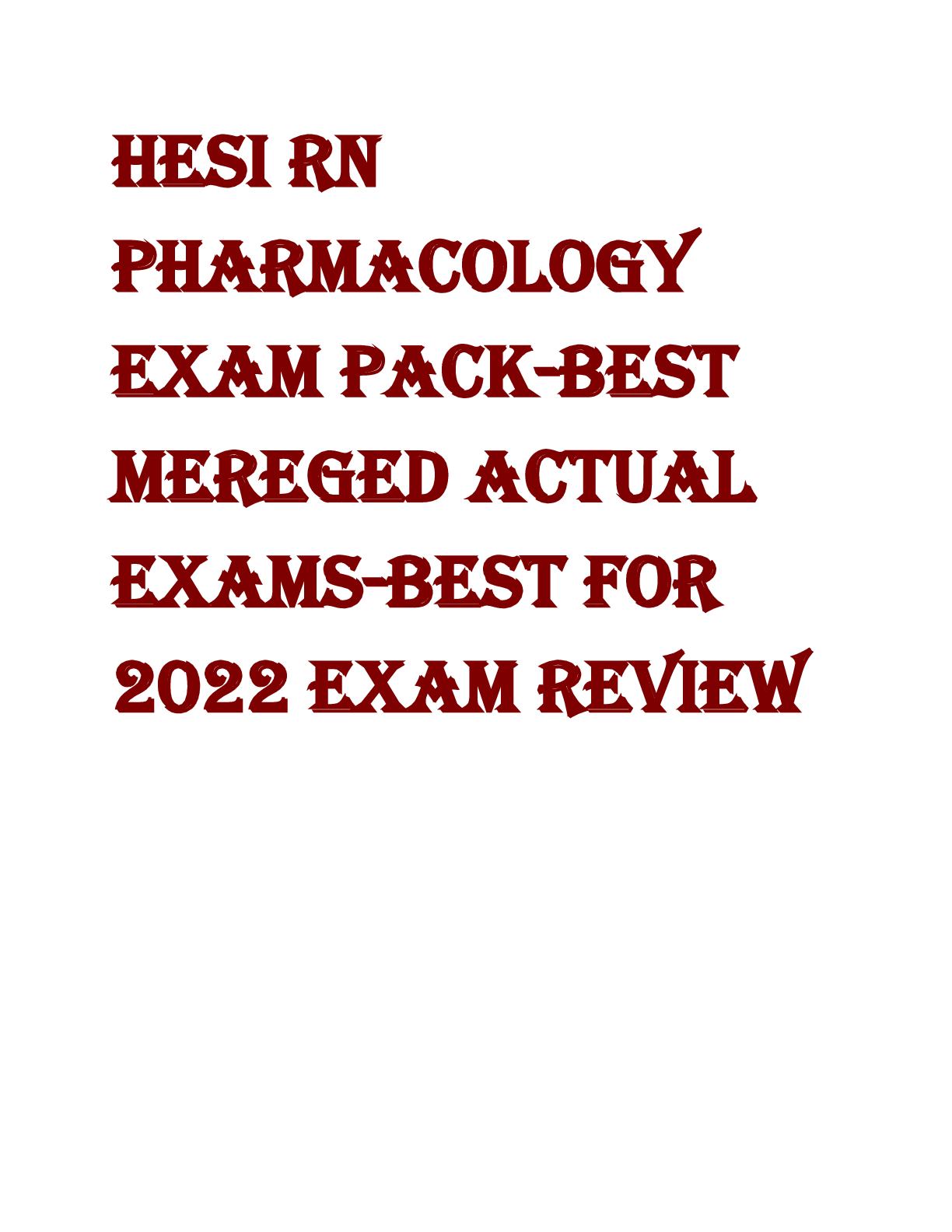
Reviews( 0 )
Document information
Connected school, study & course
About the document
Uploaded On
Jul 08, 2022
Number of pages
185
Written in
Additional information
This document has been written for:
Uploaded
Jul 08, 2022
Downloads
0
Views
62
 Exit Exam Brand New Questions and Answers Guaranteed Pass With A+ Score.png)


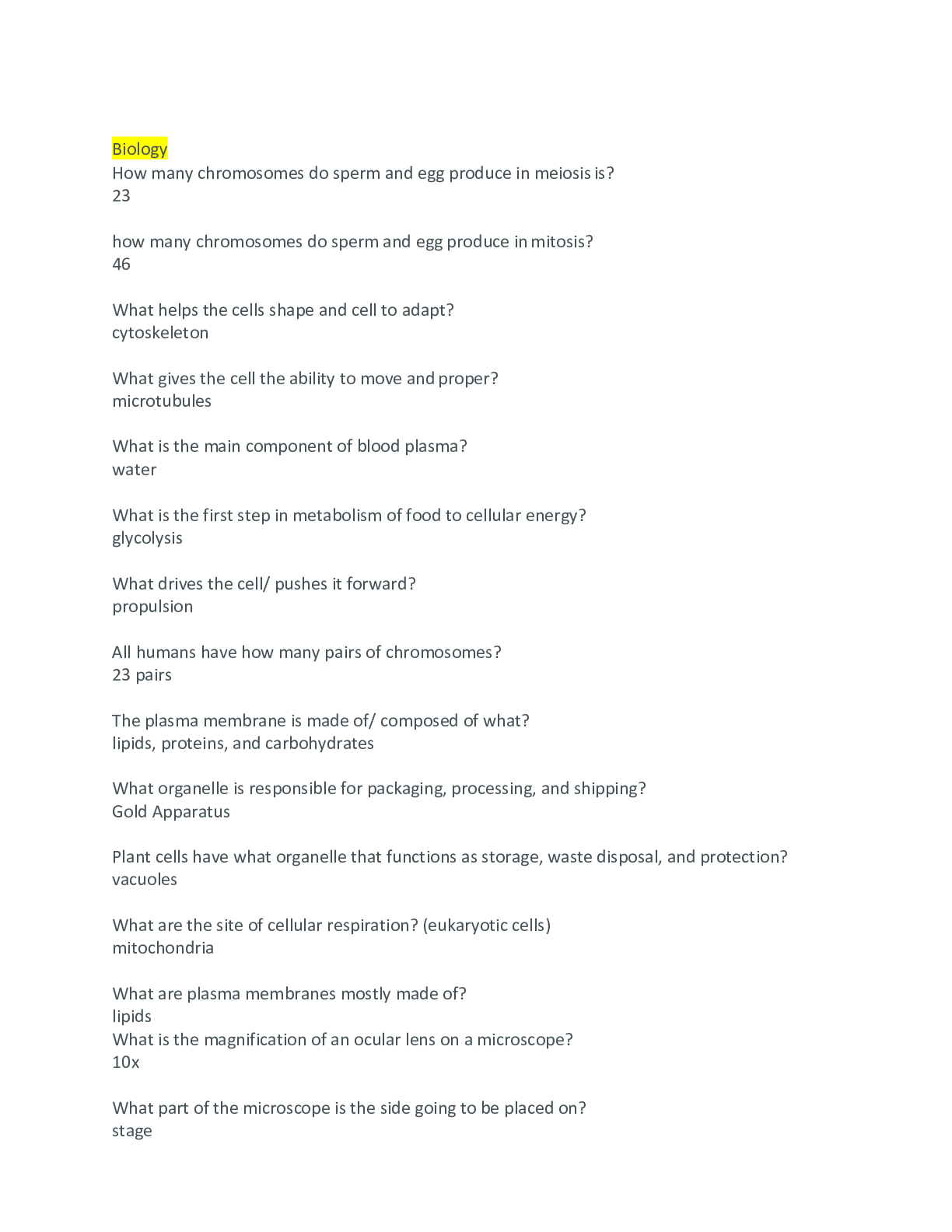


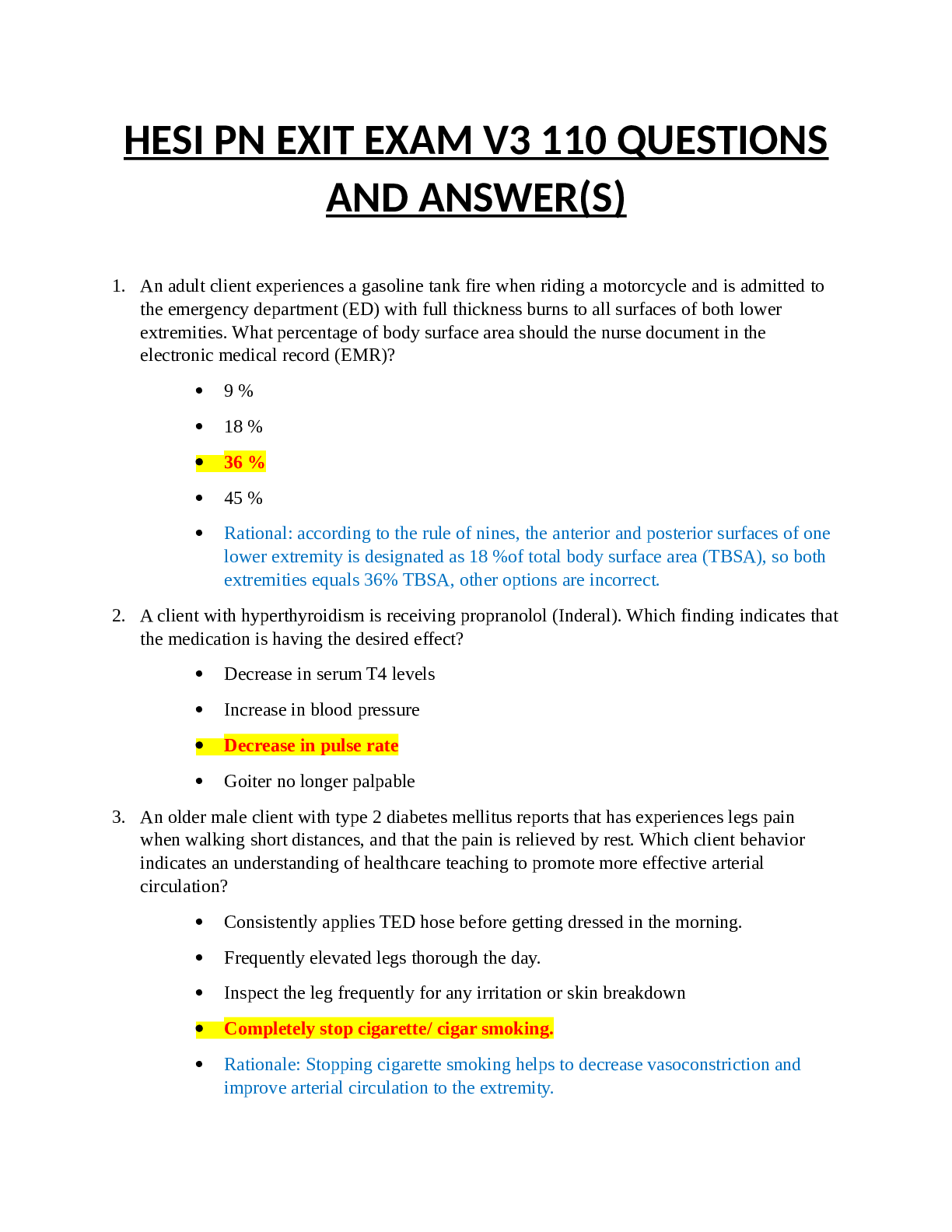
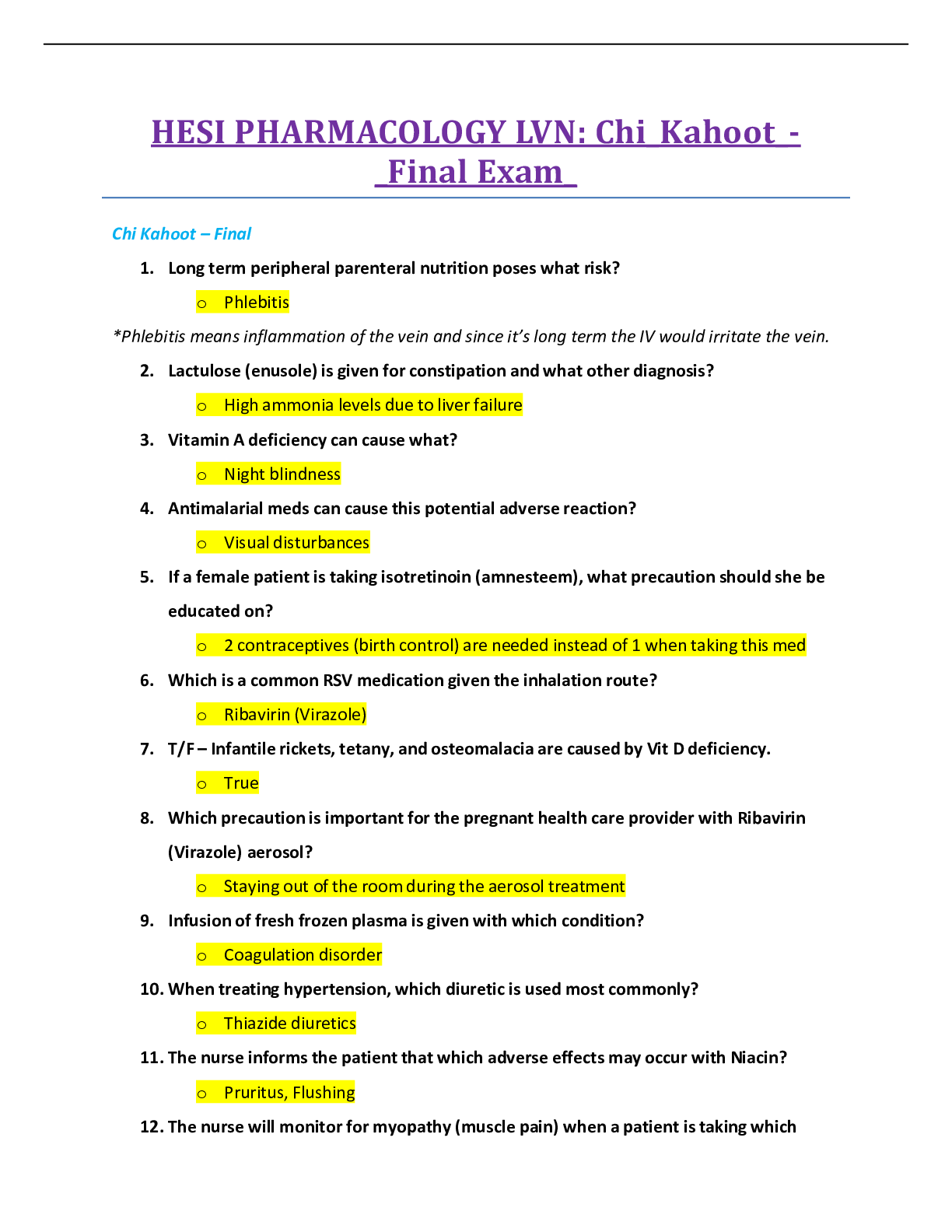


 Designed to Help You S core A+ HEALTH ASSESSMENT HESI TEST BANK; Fall 2022.png)
 RN EXIT Version 1 and Version 2 EXAM TAKEN JAN 2022 GRADED A+ Screenshots Provided For All Questions.png)
 – All 160 Questions & Answers!! (Actual Screenshots from exam taken in April 2022 A+) (All Included!!) (I received 1178 score).png)


.png)
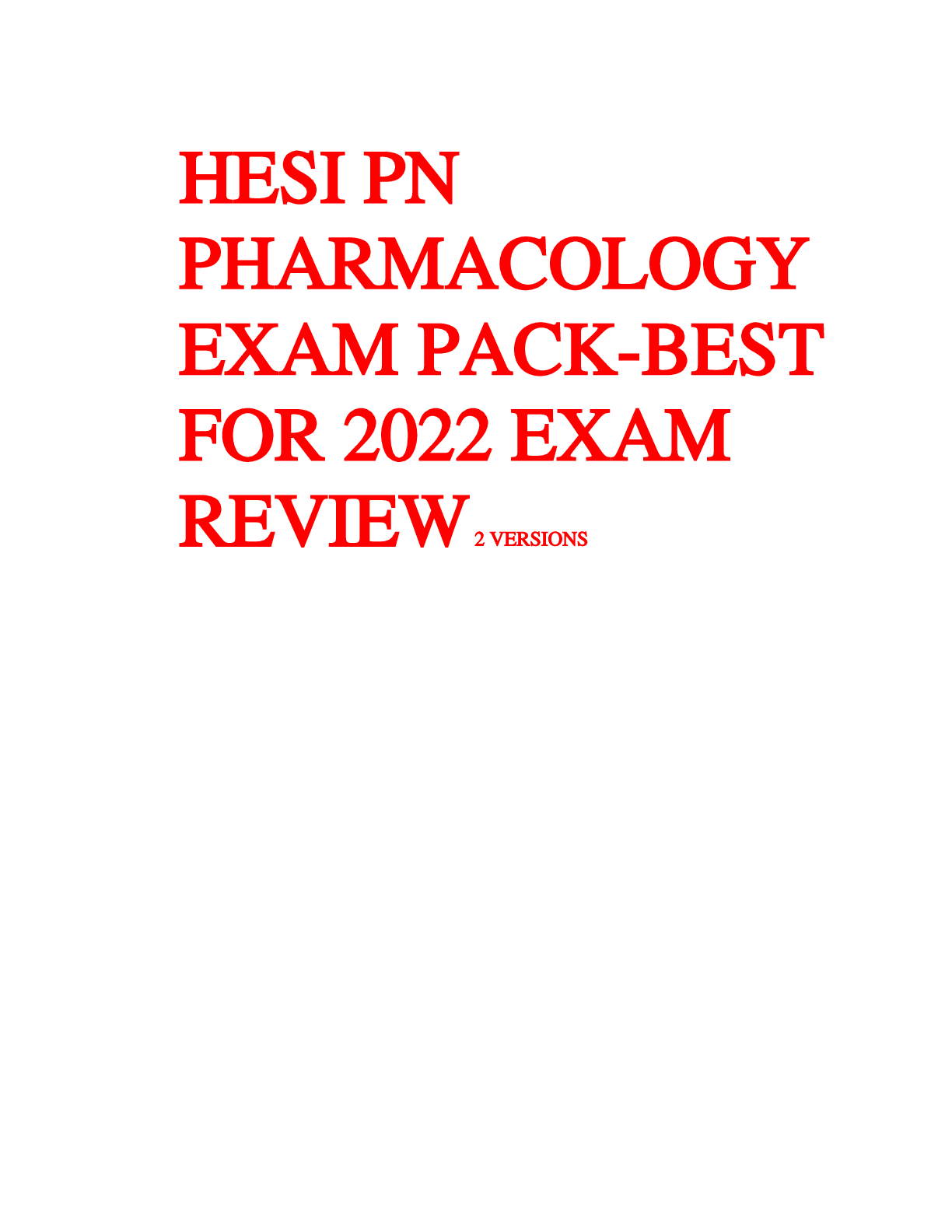
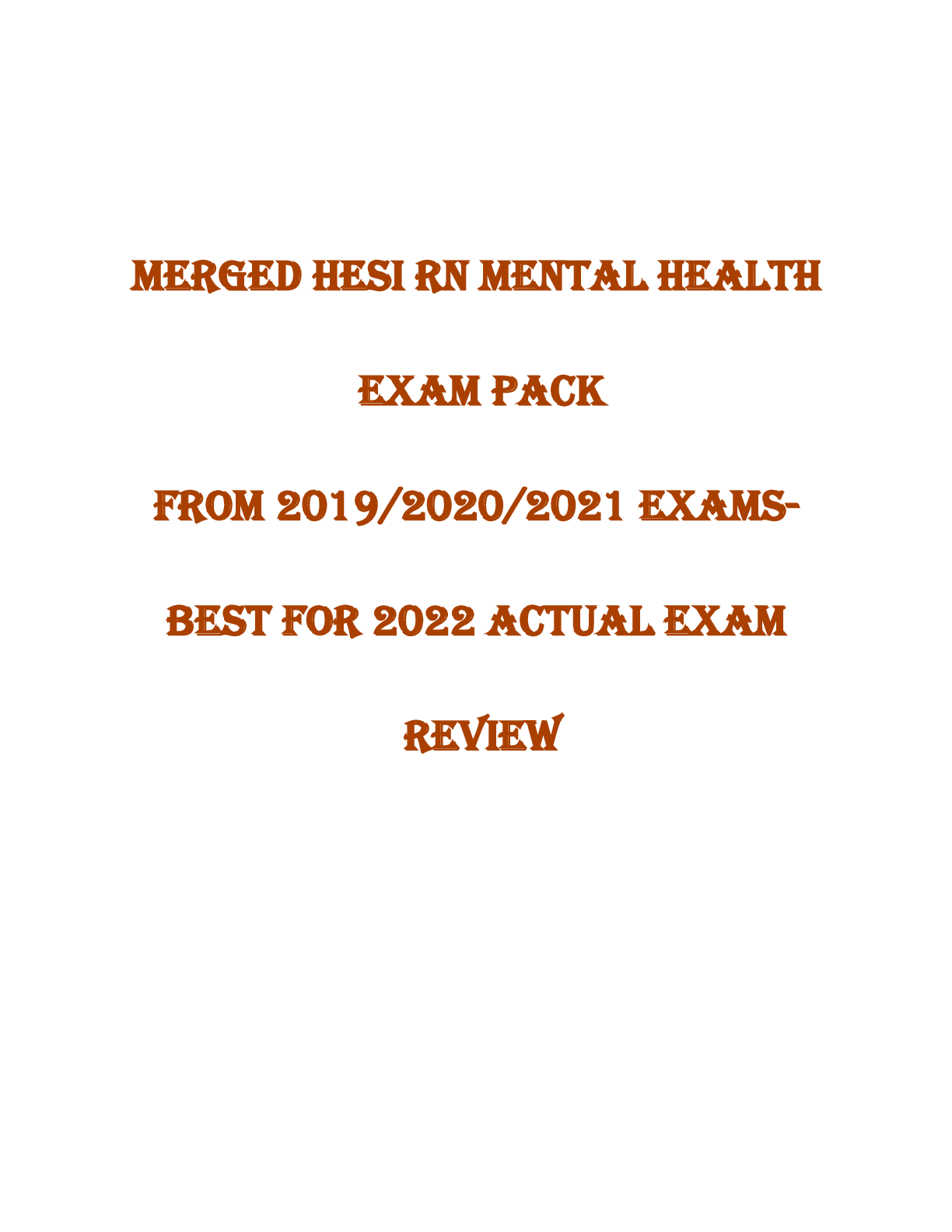

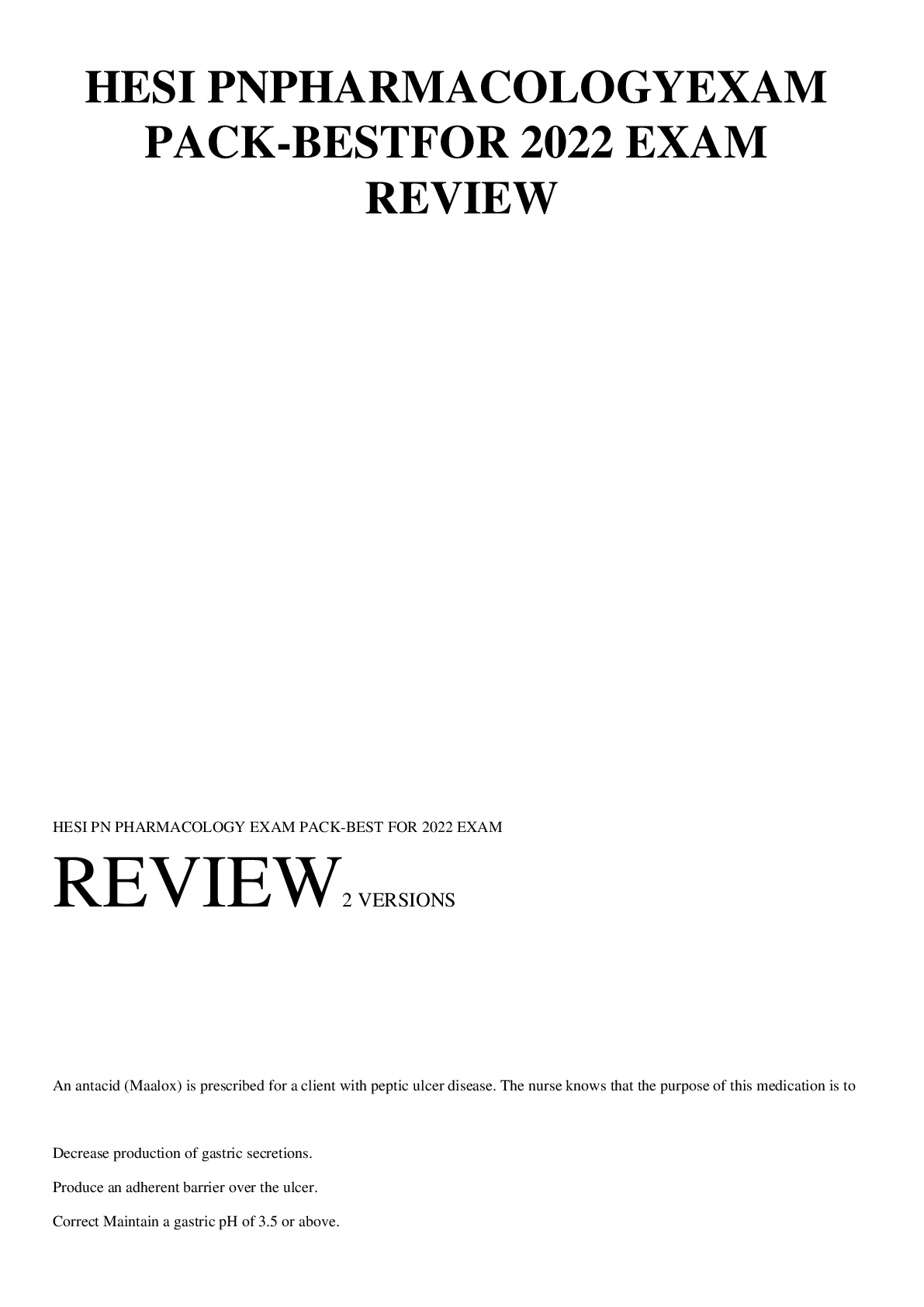
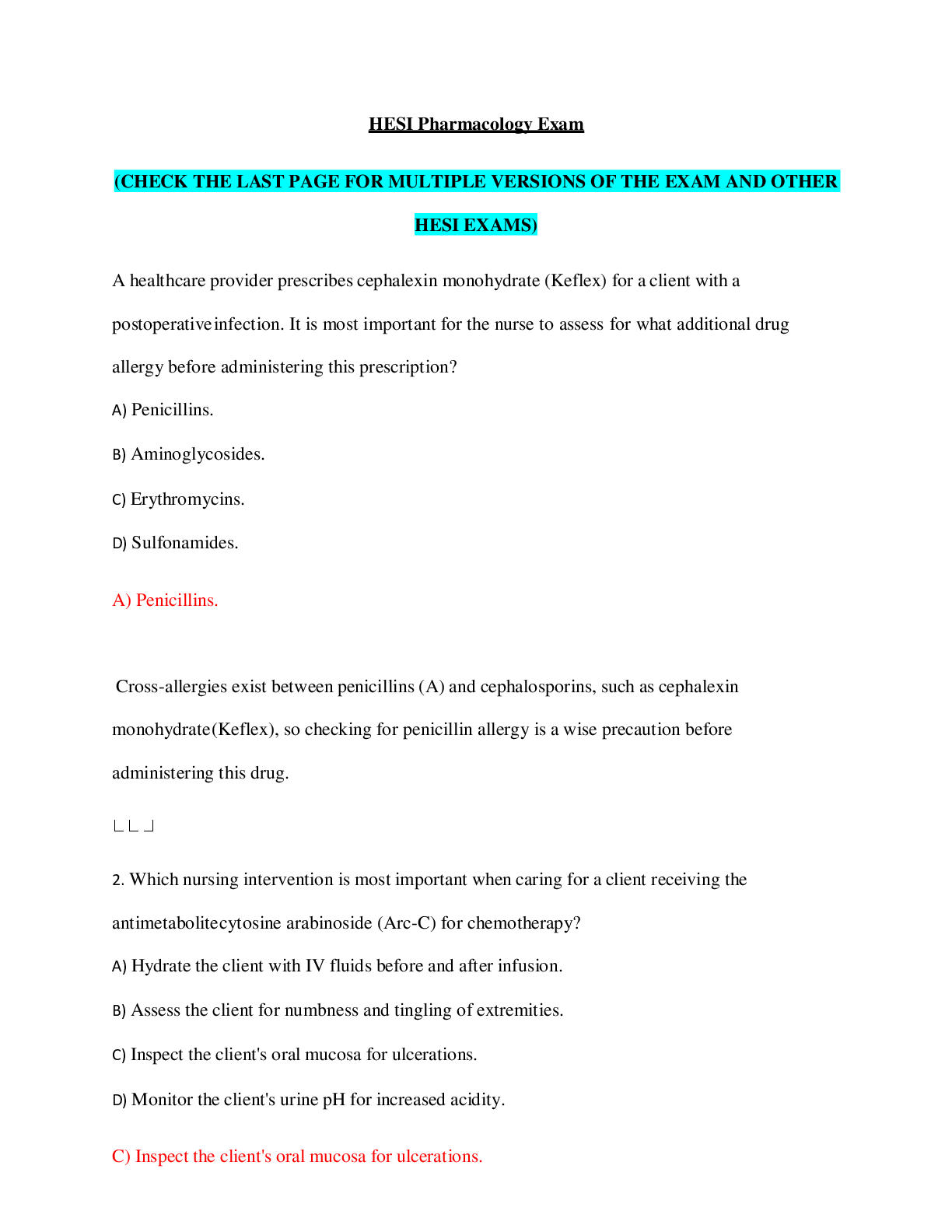




 (1).png)



